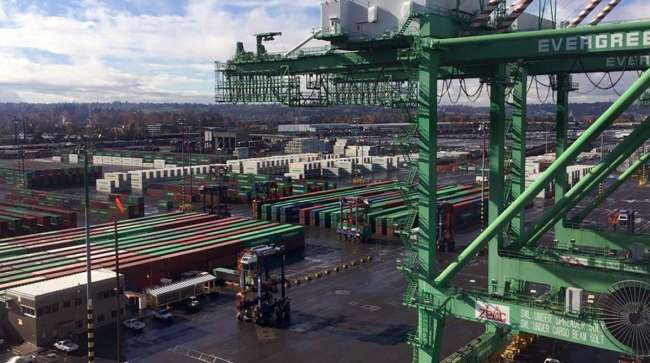Ports of Seattle, Tacoma Face Chassis Shortage

Truck drivers are facing a shortage of chassis to haul 40- and 45-foot containers from the ports of Seattle and Tacoma, according to The Northwest Seaport Alliance.
Port officials in Washington sent out a notice to the trucking community Oct. 2 to urge drivers to quickly return chassis to avoid a crippling shortage in the coming weeks.
“As we enter the peak season for both imports and exports, The Northwest Seaport Alliance asks for empty containers to be returned as quickly as possible,” the notice stated.
We have the chassis mechanics working overtime to keep the out-of-service levels as low as possible.
— Keith Lovetro, Trac Intermodal CEO
Trac Intermodal — operator of the Pacific Northwest Pool — reported that 93% of the chassis were in use as of the last week of September. About 6,000 chassis are available in the Pacific Northwest Pool. Trac Intermodal CEO Keith Lovetro told Transport Topics that normal utilization is around 85%.
“We’ve turned on all the repair capacity we can find in the market. We have the chassis mechanics working overtime to keep the out-of-service levels as low as possible,” he said. “We’ve also brought in about 400 additional 40- and 45-foot chassis, and we still have another 100 that we’ve targeted to move from other locations to the Seattle and Tacoma markets.”
The Northwest Seaport Alliance believes one reason for the shortage is the growth in transloading. Instead of putting an international container on a train, cargo owners are asking to condense three international containers into two 53-foot domestic containers. Although the process is more efficient, according to supply chain experts, transloading requires additional handling to deconsolidate the cargo and slows down the turnover rate.
“The 40-foot chassis are in such high demand due to the growth in transloading and they’re getting stuck at the distribution centers right now,” alliance spokeswoman Tara Mattina said. “In some cases, they have so many at their distribution center that the container is still sitting on a chassis until the transloading is complete.”
Lenny Glenn, district manager at Mitco Global, agrees that transloading might be a factor, but he believes the bigger problem is lack of an interoperable chassis pool.
“At Terminal 46 in Seattle, there’s a Trac-leased pool and there is a DCLI pool,” he said, referring to Direct ChassisLink Inc. “So if you get a Maersk container, you have to get a DCLI chassis. But if you go in for the other steamship lines, you need a Trac chassis. So if you come in with the wrong one, you have to get rid of a perfectly good chassis and go to the back of the line for another one.”
At the Husky Terminal in Tacoma, Glenn said there is a similar problem with Trac Intermodal and K-Line chassis.
Other drayage providers also have pushed for a “gray pool” like the pool of pools in Los Angeles and Long Beach, Calif.
“Almost daily, we have experienced drivers standing by at the ports waiting on chassis to be returned so they can pick up a load," Premier Transport President Ian Collins said. "Now that we are in peak season and the larger [cargo owners’] volumes increase, it’s definitely a hardship on the drayage carriers.”
For now, Collins is leasing extra chassis to mitigate the delays.


